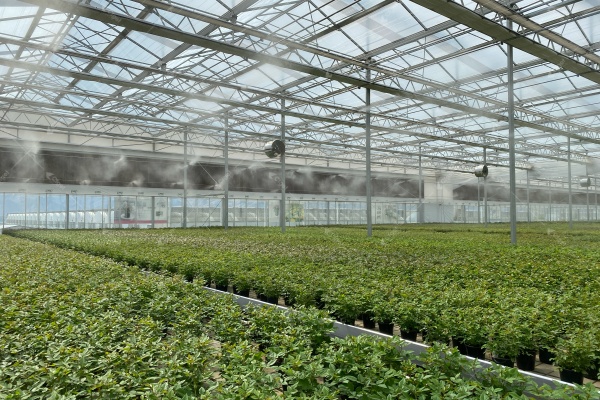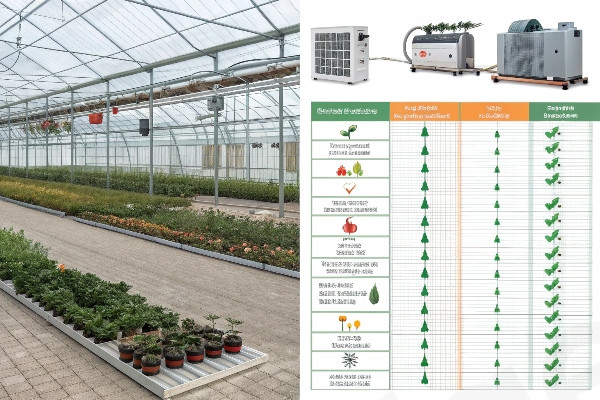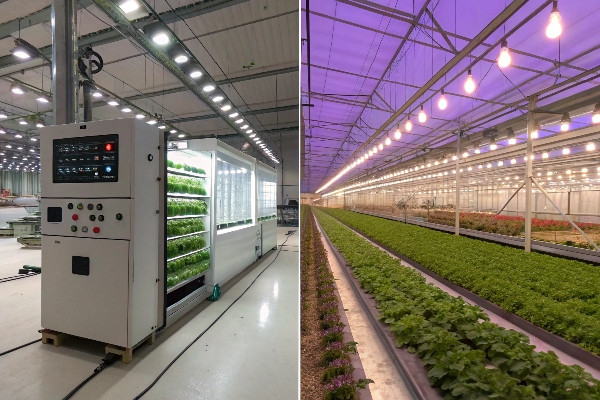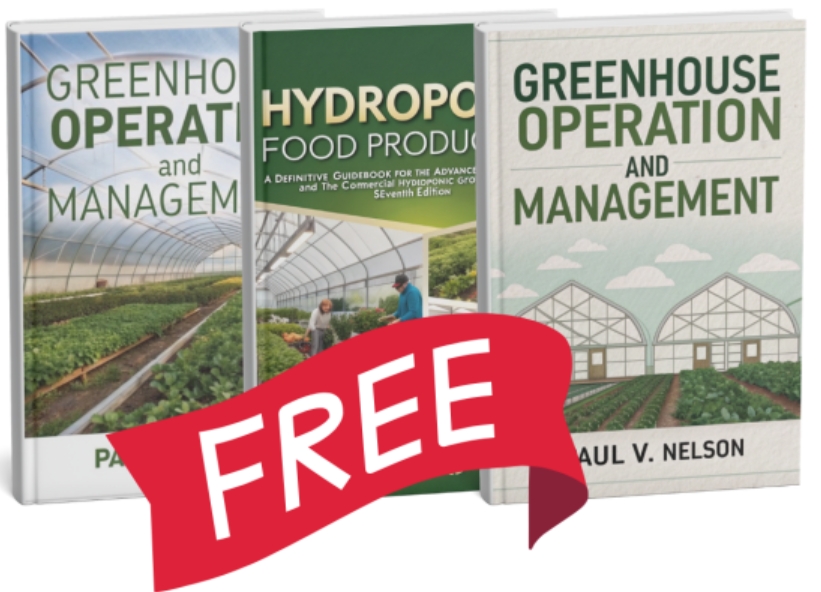Choosing the wrong greenhouse type destroys profits and wastes investment. With over 20 different commercial greenhouse designs available, selection becomes overwhelming. Smart buyers need comprehensive guidance to make profitable decisions.
Commercial greenhouse selection requires matching structure type, covering materials, and technology level to specific crop requirements and local climate conditions, with investment costs ranging from $50-500 per square meter depending on sophistication level and expected ROI periods of 3-7 years.
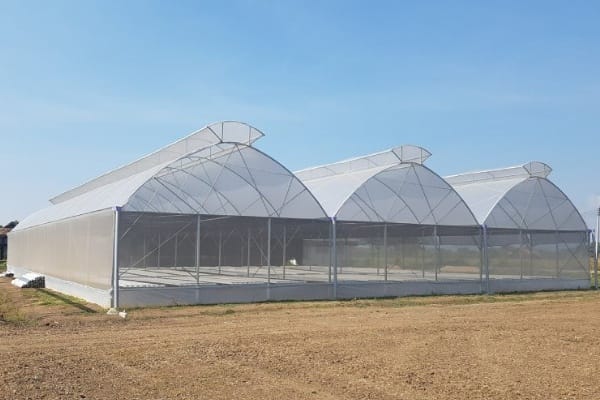
Different greenhouse types serve specific crops and climate requirements.
During my 29 years in the greenhouse industry, I have designed and installed every conceivable type of commercial greenhouse structure. Each type evolved to solve specific problems faced by growers in different climates and crop applications. Understanding these differences prevents costly mistakes and ensures profitable operations from day one.
Choosing by Primary Use: From Nursery and Vegetables to Floriculture and Specialized Farming?
Crop requirements determine greenhouse design more than any other factor. Wrong structure choice leads to poor yields and failed harvests. Matching greenhouse type to crop needs ensures optimal growing conditions and maximum profitability.
Nursery operations require 40% less heating capacity than vegetable production but need 60% more ventilation area, while floriculture demands precise humidity control and specialized benching systems that add $15-25 per square meter to construction costs.
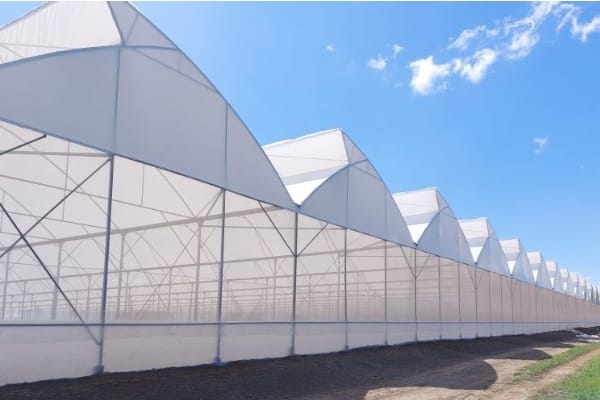
Each crop type requires specific greenhouse features and environmental controls.
Nursery and propagation greenhouses prioritize uniform environmental conditions and efficient space utilization. These structures typically feature lower heights (3-4 meters) since mature plant size remains small. Benching systems maximize growing area while providing easy access for maintenance and harvesting.
Ventilation requirements for nurseries exceed other applications because young plants generate high humidity levels through transpiration. We design nursery houses with 30-35% of floor area as ventilation openings compared to 20-25% for mature crop production. This prevents fungal diseases that devastate young plant populations.
Vegetable production greenhouses require different design priorities. Tomatoes, peppers, and cucumbers need vertical growing space with heights of 5-6 meters minimum. These crops also demand higher light levels and more precise nutrient delivery systems through integrated fertigation.
Root zone heating becomes critical for vegetable production in cooler climates. Floor heating systems or heated benches maintain optimal soil temperatures for root development. This adds $8-12 per square meter to construction costs but increases yields by 15-25% in many applications.
Floriculture operations need the most sophisticated environmental control systems. Cut flowers require precise temperature and humidity management to control flowering timing and stem quality. Day/night temperature differentials of 5-8°C optimize flower development and post-harvest longevity.
Specialized applications like mushroom cultivation or aquaponics require completely customized designs. Mushroom houses need controlled atmosphere systems and specialized ventilation for CO2 management. Aquaponics facilities integrate water treatment systems and require structural modifications for tank support.
| Application Type | Height Requirement | Ventilation Area | Special Features | Cost Premium |
|---|---|---|---|---|
| Nursery/Propagation | 3-4 meters | 30-35% | Benching, misting | +$5-10/m² |
| Vegetable Production | 5-6 meters | 20-25% | Fertigation, support | +$10-15/m² |
| Floriculture | 4-5 meters | 25-30% | Climate precision | +$15-25/m² |
| Specialized Crops | Variable | Custom | Application specific | +$25-50/m² |
Structural Design Comparison: Features of Single-Span, Multi-Span, Solar, and Venlo Greenhouses?
Structure type affects construction costs, operational efficiency, and crop performance significantly. Each design offers specific advantages for different applications and climates. Understanding structural differences guides optimal selection for your specific needs.
Multi-span greenhouses reduce construction costs by 30-40% per square meter compared to single-span structures while providing better climate uniformity, but single-span designs offer superior natural ventilation and easier expansion for growing operations.

Different structural designs create distinct growing environments and cost profiles.
Single-span greenhouses provide the simplest and most flexible design option. Each structure operates independently with its own climate control systems. This independence prevents disease spread between growing areas and allows different crops in adjacent houses. Construction costs run higher per square meter but offer maximum operational flexibility.
Natural ventilation works most effectively in single-span designs. Ridge and side vents create excellent airflow patterns without interference from adjacent structures. This makes single-span houses ideal for hot climate applications where natural cooling reduces operating costs significantly.
Multi-span greenhouses connect multiple growing areas under a continuous roof structure. This design reduces construction costs through shared walls and structural elements. Climate control systems serve larger areas more efficiently, reducing equipment costs per square meter of growing space.
The main disadvantage of multi-span design involves climate uniformity challenges. Large open spaces can develop temperature and humidity gradients that affect crop performance. We address this through strategic fan placement and internal air circulation systems.
Solar greenhouses optimize energy efficiency through passive solar design principles. South-facing glazing maximizes winter sun exposure while north walls use insulated construction. These designs work best in cold climates where heating costs represent major operational expenses.
Venlo-type greenhouses originated in the Netherlands and represent the most sophisticated multi-span design. Sawtooth roof profiles provide excellent natural ventilation while maintaining structural efficiency. These systems work particularly well for high-value crops requiring precise environmental control.
Modern Venlo designs incorporate advanced materials and automation systems. Motorized roof vents, integrated shade systems, and computerized climate control create optimal growing conditions. Initial costs run 50-100% higher than basic designs but deliver superior crop quality and yields.
| Structure Type | Cost per m² | Climate Control | Natural Ventilation | Best Application |
|---|---|---|---|---|
| Single-Span | $80-120 | Independent | Excellent | Small-medium farms |
| Multi-Span | $60-90 | Shared systems | Good | Large production |
| Solar Greenhouse | $70-110 | Passive optimized | Limited | Cold climates |
| Venlo-Type | $120-200 | Sophisticated | Superior | High-value crops |
Roof and Covering Materials: How They Affect Light, Insulation, and Maintenance Costs?
Covering material selection impacts crop performance, energy costs, and long-term maintenance requirements more than any other design decision. Wrong material choices create ongoing problems that affect profitability for decades. Smart material selection optimizes performance while minimizing lifecycle costs.
Polycarbonate panels provide 40% better insulation than glass while maintaining 85% light transmission, reducing heating costs by $2-4 per square meter annually, but glass offers 15-20 year longer lifespan and superior light quality for premium crop production.
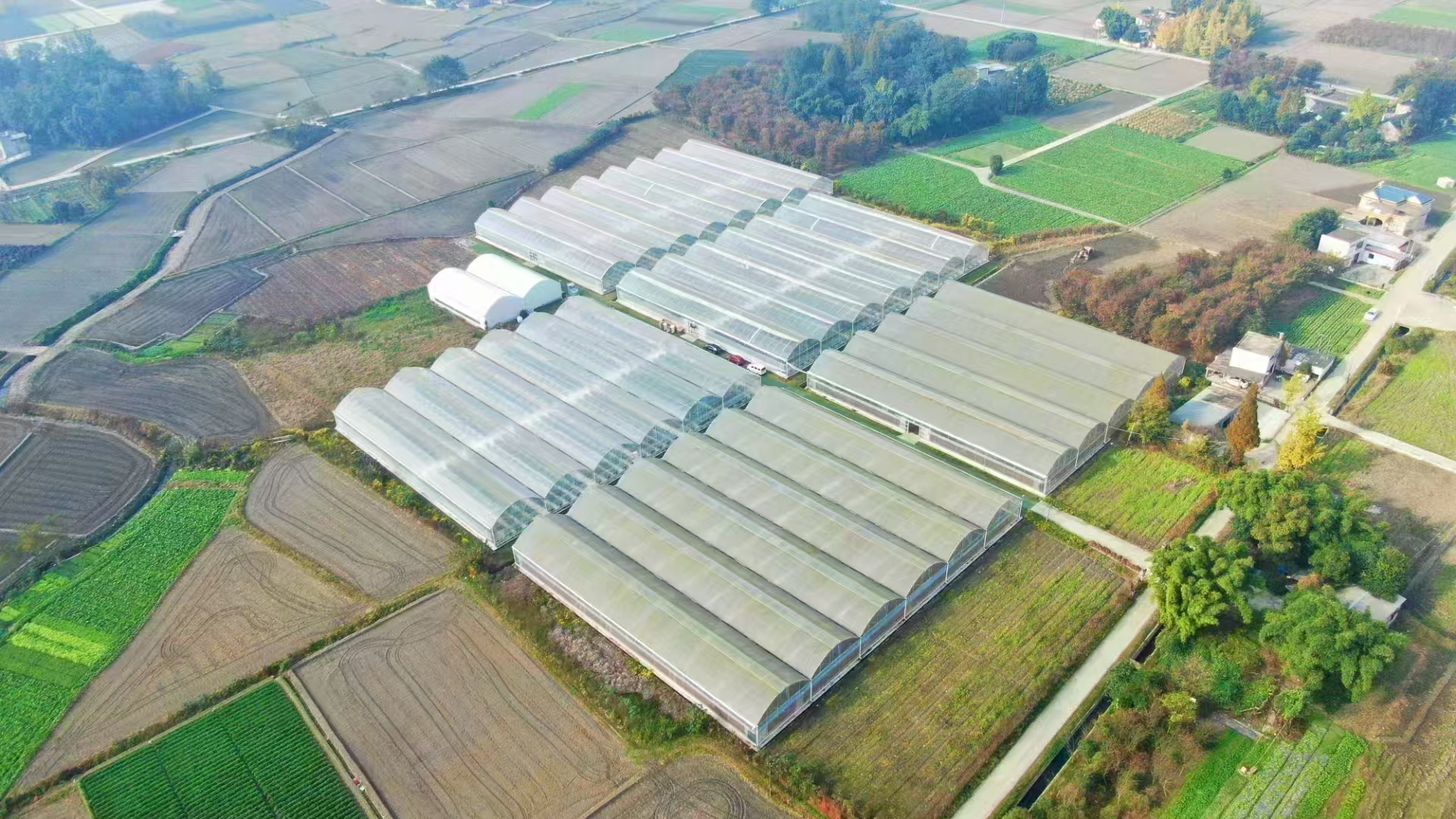
Material properties directly affect crop performance and operational costs.
Glass remains the premium covering material for commercial greenhouses despite higher initial costs. Single-pane glass provides 92% light transmission with excellent optical clarity. This superior light quality benefits crops requiring high light levels or precise photoperiod control.
Thermal performance represents glass’s main weakness. Single glazing offers minimal insulation value, requiring more heating energy in cold climates. Double-glazed units improve insulation but reduce light transmission to 85-87% while significantly increasing costs.
Polycarbonate panels offer the best balance of performance and cost for most commercial applications. Twin-wall panels provide R-2.5 insulation value compared to R-1.0 for single glass. This improved thermal performance reduces heating costs by 30-50% in cold climate operations.
Light transmission through polycarbonate reaches 85-90% depending on panel thickness and quality. The cellular structure creates light diffusion that reduces hot spots and provides more uniform light distribution throughout the growing area. This diffused light often improves crop performance compared to direct sunlight through glass.
Plastic film represents the lowest-cost covering option but requires replacement every 3-4 years. Single-layer films provide minimal insulation while double-layer inflated systems offer better thermal performance. Film houses work well for seasonal crops or operations with limited capital budgets.
Maintenance requirements vary significantly between materials. Glass requires minimal cleaning but replacement costs run high when breakage occurs. Polycarbonate needs regular cleaning to maintain light transmission but resists impact damage. Plastic films need complete replacement periodically but individual repairs cost very little.
Specialty coatings enhance material performance for specific applications. Anti-reflective coatings increase light transmission by 2-4%. IR-blocking coatings reduce summer cooling loads. Anti-condensate treatments prevent water droplets that can damage crops or reduce light levels.
| Material Type | Light Transmission | Insulation Value | Lifespan | Annual Cost/m² |
|---|---|---|---|---|
| Single Glass | 92% | R-1.0 | 25+ years | $1.50-2.00 |
| Double Glass | 85% | R-2.0 | 25+ years | $2.50-3.50 |
| Twin-wall PC | 85% | R-2.5 | 15-20 years | $2.00-2.75 |
| Plastic Film | 88% | R-1.2 | 3-4 years | $1.25-1.75 |
Are High-Tech Greenhouses Worth the Investment? ROI Analysis for Smart and Energy-Saving Technologies?
Advanced technology promises better yields and lower operating costs but requires substantial upfront investment. Many growers struggle to justify high initial costs against uncertain returns. Proper ROI analysis reveals which technologies deliver real value versus expensive gadgets.
High-tech greenhouse systems generate 25-40% higher yields while reducing labor costs by 30-50%, creating positive ROI within 4-6 years for crops valued above $15 per kilogram, but basic operations growing low-value crops rarely justify advanced automation investments.
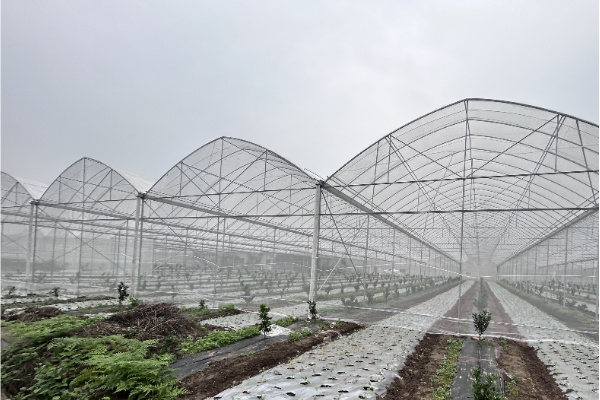
Advanced automation systems deliver measurable returns for high-value crop production.
Climate control automation represents the most cost-effective technology upgrade for most operations. Computerized systems monitor temperature, humidity, CO2, and light levels continuously. These systems adjust heating, cooling, and ventilation automatically to maintain optimal growing conditions.
The investment in basic climate control runs $15-25 per square meter but delivers immediate benefits. Automated systems prevent the temperature swings and environmental stress that reduce crop yields. We typically see 10-15% yield improvements within the first growing season.
Advanced climate control systems integrate weather forecasting and predictive algorithms. These systems anticipate weather changes and adjust greenhouse conditions proactively. This prevents stress conditions before they occur and optimizes energy usage based on weather predictions.
LED lighting technology offers significant advantages for specific applications. Supplemental lighting extends growing seasons and increases yields in low-light periods. LED systems consume 50% less electricity than traditional HPS lighting while generating less heat that requires cooling.
The ROI calculation for LED lighting depends heavily on electricity costs and crop values. Operations in high-electricity-cost regions see faster payback periods. High-value crops like leafy greens and herbs justify LED investments more easily than low-value crops like basic vegetables.
Automated irrigation and fertigation systems reduce labor requirements while improving crop nutrition management. These systems deliver precise amounts of water and nutrients based on plant growth stages and environmental conditions. Labor savings alone often justify the investment within 2-3 years.
Robotic systems represent the cutting edge of greenhouse automation but require careful economic analysis. Harvesting robots work well for specific crops like tomatoes and strawberries but cost $100,000-300,000 per unit. These systems only make economic sense for large operations with high labor costs.
Environmental monitoring systems provide valuable data for optimizing growing conditions and identifying problems early. Wireless sensor networks track conditions throughout the greenhouse and alert managers to issues immediately. This prevents crop losses that can cost thousands of dollars per incident.
| Technology Type | Investment Cost/m² | Annual Savings/m² | Payback Period | Best Application |
|---|---|---|---|---|
| Basic Climate Control | $15-25 | $8-12 | 2-3 years | All operations |
| Advanced Climate | $35-50 | $15-20 | 3-4 years | High-value crops |
| LED Lighting | $50-80 | $20-30 | 3-5 years | Year-round production |
| Full Automation | $150-250 | $50-75 | 4-6 years | Large commercial |
Conclusion
Successful commercial greenhouse selection requires matching structure type, materials, and technology level to specific crop requirements, climate conditions, and financial objectives for optimal long-term profitability and operational efficiency.
